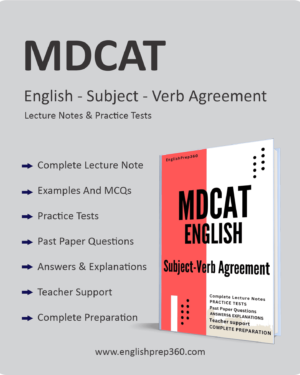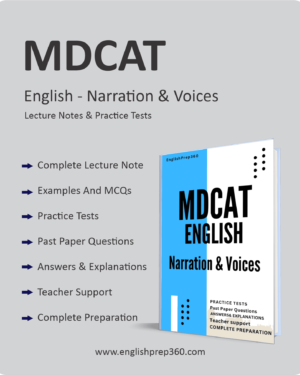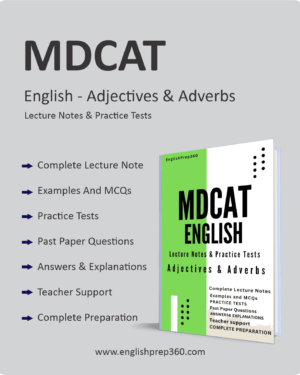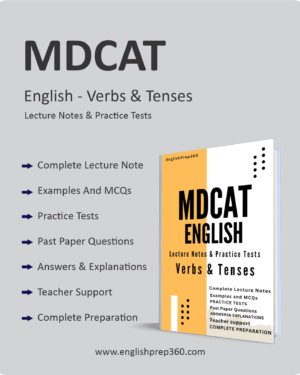VERBS
VERBS – Key Points:
- Definition and function of verbs in English
- Main types of verbs (action, linking, auxiliary, modal)
- Regular versus irregular verb forms
- Transitive and intransitive verbs
- Subjunctive Verbs
- Verb patterns with infinitives and gerunds
- Modal verbs and their specific uses
- Phrasal verbs commonly tested in entrance exams
- Subject-verb agreement rules and exceptions
- Voice (active versus passive) and its appropriate usage
- Common verb errors in Pakistani students’ English
VERBS – Paragraph:
“Verbs drive English sentences and represent a central focus of entrance exam assessment, with their complex forms and patterns requiring careful mastery. This comprehensive section covers all verb categories—action, linking, auxiliary, and modal—with special attention to irregular verbs, challenging subject-verb agreement scenarios, and verb patterns with infinitives and gerunds that frequently appear in error identification questions. Students will learn to distinguish between transitive and intransitive verbs, understand the strategic use of active versus passive voice, and recognize commonly tested phrasal verbs that appear in reading comprehension and sentence completion questions. Through focused examples mirroring actual test questions, this guide ensures students develop the precise understanding needed to excel in verb-related questions that significantly impact entrance exam scores.”
TENSES
TENSES – Key Points:
- The complete English tense system (12 tenses) and their usage
- Simple, continuous, perfect, and perfect continuous forms
- Formation rules for all tenses (affirmative, negative, question)
- Time markers associated with specific tenses
- Appropriate contextual usage of each tense
- Common tense sequence errors in complex sentences
- Tense consistency requirements in paragraphs
- Special focus on past perfect and future perfect forms
- Conditional sentences and their tense patterns
- Common tense-related errors in entrance exam questions
TENSES – Paragraph:
“Mastery of English tenses is essential for entrance exam success, as these complex verb forms frequently appear across multiple question types in medical and engineering admission tests. This comprehensive guide systematically addresses all twelve English tenses—including simple, continuous, perfect, and perfect continuous forms in past, present, and future timeframes—with special attention to challenging areas like sequence of tenses and conditional structures. Students will learn precise formation rules, understand the appropriate contextual application of each tense, and develop proficiency in identifying tense-related errors in complex sentences. Through carefully curated examples reflecting actual entrance exam questions, this section ensures students acquire the nuanced understanding needed to excel in tense-related questions that consistently comprise a significant portion of English language assessment.”






